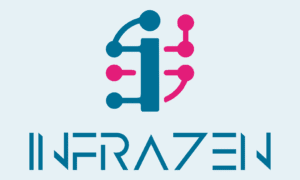Creative industries often miss out on the benefits of IT due to misconceptions like “IT limits creativity” or “IT is only for large companies.” But aligning IT with business goals can enhance efficiency, protect intellectual property, and drive innovation. Creative industries need better IT alignment to fully realise these advantages. Here’s how:
- Misconceptions: IT can automate repetitive tasks, freeing up time for creative work. Modern tools are user-friendly and scalable for all business sizes.
- Collaboration: Bridging gaps between IT and creative teams improves workflows and productivity.
- Security: Protecting creative assets with secure tools is crucial, especially in remote work setups.
- Solutions: Tools like Trello, Adobe Creative Cloud, and AI-driven systems can streamline processes without stifling creativity.
Barriers to IT Alignment in Creative Industries
Misunderstandings About IT in Creative Work
Misconceptions about the role of IT often block creative teams from using technology to improve collaboration and drive new ideas. Industry studies show these false beliefs have real business consequences:
| Barrier | Business Impact | Suggested Solution |
|---|---|---|
| Belief that technology limits creativity | Missed chances for new ideas and approaches | Use tools like Trello or Asana to automate repetitive tasks and free up time for creative work |
| View that IT isn’t needed in creative fields | Falling behind competitors | Share examples such as Pixar‘s integration of IT to elevate storytelling and production processes |
Challenges Between Teams and Workflows
A lack of harmony between IT and creative teams can lead to operational struggles. Warren Milburn, founder of InfraZen, points out that creative businesses often face a disconnect between these groups, which impacts their ability to collaborate effectively.
This gap often results in resistance to new tools and IT solutions that don’t align with the team’s needs, disrupting workflows. When workflows become disjointed, both creativity and productivity take a hit. On top of internal challenges, creative industries must also tackle external risks like protecting intellectual property and ensuring data security.
Security and Intellectual Property Concerns
While improving internal workflows is important, safeguarding creative assets from external threats is just as critical to staying competitive. For instance, a design agency using unsecured file-sharing platforms risks exposing client data, potentially harming both trust and reputation.
- Data Breach Risks: Programs like Digital Catapult aim to help industries secure advanced technologies, such as AI and immersive tools, to protect the UK’s media production economy [1].
- Access Control Issues: Using personal emails or unauthorized software can create serious vulnerabilities.
- Cloud Security Weaknesses: Inadequately secured cloud platforms can expose sensitive assets, especially as remote and hybrid work become more common.
Addressing these barriers requires bridging both technical and cultural divides. Building a workplace culture that embraces technology while supporting creativity is key to overcoming these challenges.
Steps to Align IT with Business Needs
Aligning IT with business goals involves a mix of clear communication, selecting the right tools, and leveraging expert support.
Improving Communication Between Teams
Bridging the gap between IT and other departments starts with open communication. Workshops and meetings help teams exchange ideas and build trust. Warren Milburn, founder of InfraZen, points out that involving IT representatives in creative project discussions allows for early identification of technical needs and potential roadblocks.
Structured feedback systems can keep everyone on the same page:
| Communication Channel | Purpose |
|---|---|
| Weekly Tech Reviews | Address project needs and solve issues proactively |
| Monthly Strategy Sessions | Sync IT efforts with broader business objectives |
| Quarterly Assessments | Measure performance and refine strategies |
Once communication is streamlined, the focus shifts to selecting IT solutions that meet your business requirements.
Choosing IT Solutions That Fit Your Business
Picking the right IT tools is essential for supporting creative workflows. Look for tools that are easy to use, secure, and integrate seamlessly with your current systems.
Factors to consider when evaluating IT tools:
- Scalability to grow with your business
- Integration with existing workflows
- Robust security features
- A user-friendly interface
Even with the best tools, ongoing support is crucial for maintaining alignment and achieving long-term success.
Using Managed IT Services for Support
Managed IT services bring specialized expertise to ensure your technology aligns with your business goals. They provide a range of benefits that can have a direct impact on your business:
| Benefit | Business Impact |
|---|---|
| Proactive Management | Minimizes downtime and prevents technical disruptions |
| Long-Term Planning | Keeps technology aligned with evolving business objectives |
| Cost Optimization | Reduces unnecessary IT spending through standardization |
| Enhanced Security | Safeguards intellectual property and creative assets |
Research shows that managed IT services contribute to business growth. For example, the Creative Industries Sector Vision outlines a £50 billion growth target, emphasizing the role of aligned IT strategies [1].
sbb-itb-70a39e2
Tools to Support IT and Business Integration
Tools for Collaboration and Workflow Management
Today’s workflows often require teams to collaborate across different locations. Cloud-based platforms and project management tools have become crucial for enabling remote work and real-time teamwork. For instance, streaming services now make up 67.3% of global music market revenues [3], underlining the reliance on cloud solutions.
Here are some platforms widely used by creative teams:
| Platform | Purpose |
|---|---|
| Google Workspace | Enables real-time collaboration for content creation teams. |
| Microsoft Teams | Provides secure file sharing and project channels for large agencies. |
| Adobe Creative Cloud | Supports asset management and version control for design professionals. |
Warren Milburn from InfraZen points out that selecting the right project management tool can cut down on administrative tasks while keeping projects on schedule. These tools allow teams to stay organized without stifling creativity, offering features like visual workflows, time tracking, and automated reporting.
AI Tools for IT Monitoring and Performance
AI-driven tools are transforming how businesses manage IT. Tools like Splunk and New Relic offer real-time system monitoring and can proactively detect potential issues, ensuring that creative work remains uninterrupted.
These AI tools typically focus on:
| Monitoring Area | Benefit to Business |
|---|---|
| System Performance | Reduces disruptions to creative processes. |
| Security Threats | Speeds up detection and response to threats. |
| Resource Usage | Helps cut IT costs and improve efficiency. |
Conclusion: Aligning IT for Better Results
Key Takeaways
Aligning IT with business needs is crucial for industries driven by creativity. It helps them stay innovative, adapt to market shifts, and remain competitive. Three main factors play a role in achieving this alignment:
| Factor | What to Focus On |
|---|---|
| Strategic Planning & Governance | Ensure IT investments support business goals through collaboration with stakeholders. |
| Communication | Keep communication open across teams to maintain a shared vision. |
| Implementation | Prioritize scalable solutions that improve creative workflows. |
When these elements work together, IT alignment becomes a powerful tool for fostering creativity and driving business growth.
IT and Creativity: Striking the Right Balance
To align IT with creative objectives, organizations should prioritize building cross-functional teams and adopting user-friendly, scalable technology. This involves:
- Creating clear guidelines for how technology will be used.
- Encouraging collaboration between IT and creative departments.
- Regularly evaluating IT investments to ensure they deliver measurable business results.
The challenge lies in balancing technological progress with the freedom needed for creativity. When done right, digital tools can enhance – not hinder – the creative process, leading to better efficiency and strategic flexibility [2].
The future of IT in creative industries depends on fostering a partnership between technology and creativity. By reimagining how technology can support creative work, businesses can lay the groundwork for continuous innovation while maintaining their distinct creative edge.
FAQs
As technology becomes more integral to creative industries, aligning IT strategies with business goals is essential for staying competitive. Below are answers to some frequently asked questions on this topic.
What is the IT business alignment strategy?
An IT business alignment strategy ensures that IT efforts directly support a company’s objectives. This involves setting clear goals, identifying weaknesses, creating a detailed plan, and using shared performance metrics to track progress.
| Component | Description |
|---|---|
| Vision Alignment | Setting clear organizational goals that both IT and business teams can follow. |
| Gap Analysis | Reviewing current IT operations to pinpoint areas needing improvement. |
| Implementation Plan | Developing a step-by-step plan to align IT with business priorities. |
| Performance Metrics | Defining shared KPIs to monitor and measure success. |
What is a key strategy for aligning IT with business objectives?
The UK’s Creative Industries Sector Vision offers a great example of IT alignment, aiming for a £50 billion boost in gross value added through smarter IT integration [1]. Key strategies include:
- Strategic Planning: Align IT investments with creative processes and security requirements.
- Collaboration: Build strong communication channels between IT and creative teams to ensure tools support innovation.
- Performance Tracking: Continuously evaluate IT projects to measure their impact on creativity and overall business objectives.

